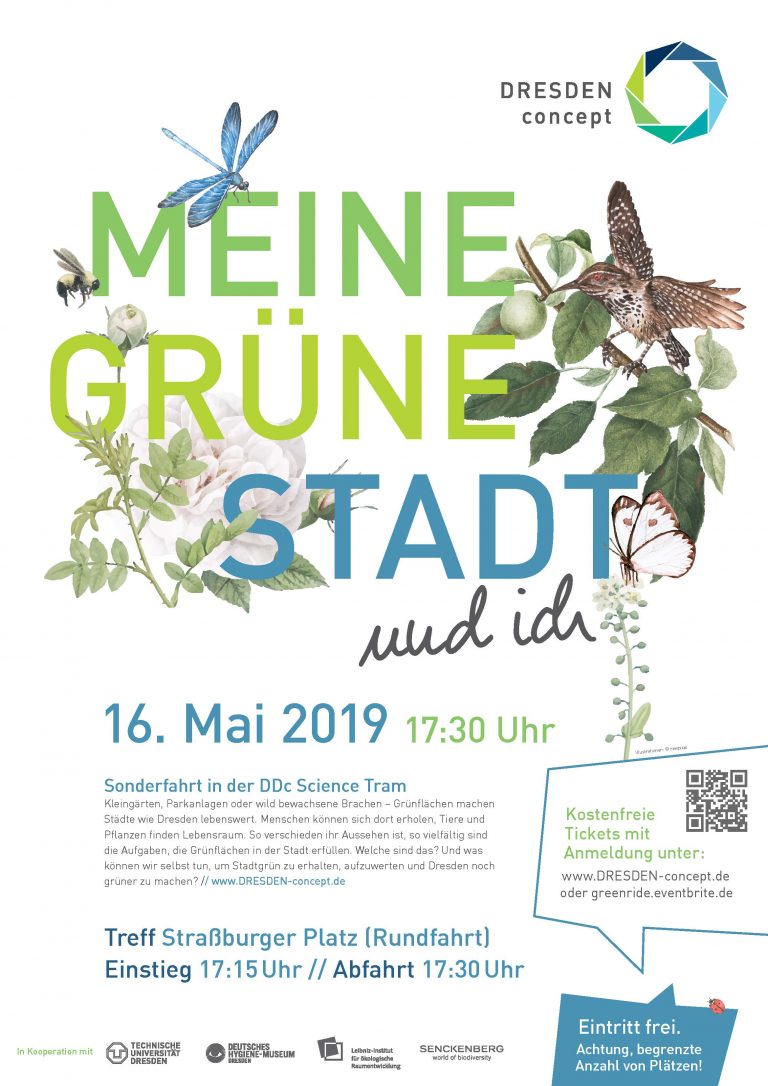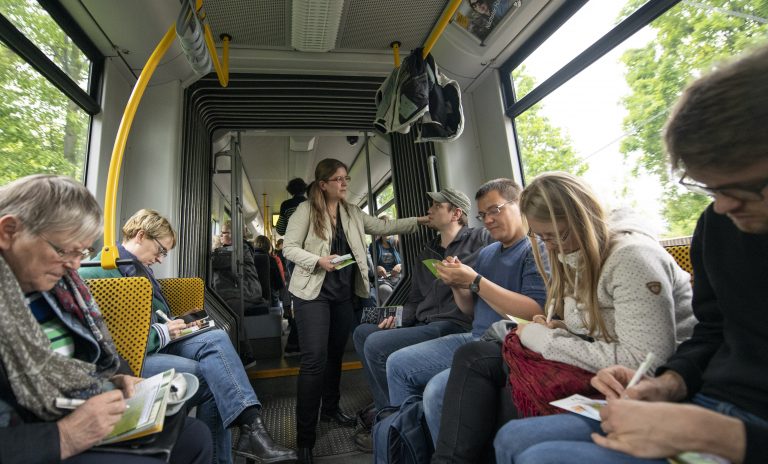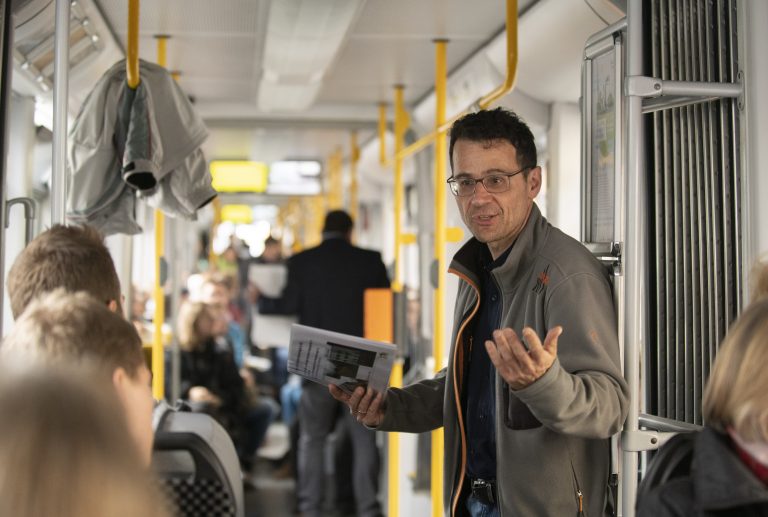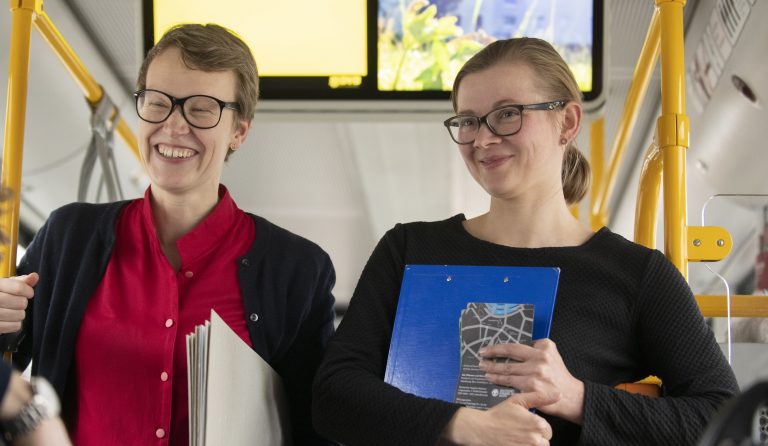My Green City and I
The first special trip of the DRESDEN-concept tram ”My Green City and I“ took place on 16th May with the event running inside the DDc Science Tram itself. Whether allotments, parks or wildly overgrown fallow land – green spaces make cities like Dresden much more habitable. People look to these spaces to relax, animals make their homes there. Foliage in the city makes hot summers more bearable and can mitigate damage caused by floods. As different as their appearance may be, the tasks that green spaces perform in the city are just as varied. So what are these tasks? And what can we ourselves do to preserve and enhance urban greenery and make Dresden even greener? Researchers from different DRESDEN-concept facilities addressed these and many other questions during the special trip in the Science Tram.
The speakers held a discussion with the 115 visitors of the event during the one and a half hour ride through Dresden. The tram ride started at the “Green Heart” of Dresden, the “Grand Garden” (Grosser Garten), and passed, among other places, the Leibniz Institute of Ecological Urban and Regional Development (IÖR), the Deutsches Hygiene-Museum and housing estates in Gorbitz, where researchers of TU Dresden investigated heat radiation. The event was moderated by Hendrikje Wehnert (IÖR).

With our expert Kerstin Krellenberg (IÖR) and her team, the participants talked about their personal use of green spaces in their surroundings. The Institute is developing an app that aims to make information about green spaces easily accessible and to present offers of use on a low-threshold basis. Among other things, playgrounds or the best jogging route should be easy to find. In order to adapt the web app to the needs of potential users in the best way possible, Kerstin Krellenberg and her team conducted a survey amongst the participants on how they use green spaces in Dresden and what they would like to see. This information will flow into the development of the app with further surveys. The participants provided many suggestions and actively supported the researchers.
 Martin Förster
Martin Förster
 Martin Förster
Martin Förster
The second speaker from Leibniz IÖR, Wolfgang Wende, presented the services nature provides for people. Clean air, fresh water, wild herbs and berries for consumption, wood as a building material or space for inspiration and recreation – the number of things that nature produces or positively influences in the city as well seems almost endless. With the term ecosystem service, Wolfgang Wende tries to summarise these factors and make them scientifically accessible. In this way, he seeks to develop concepts for a city that is more habitable. Among other things, fallow land or green strips play a decisive role.
After this, Valeri Goldberg from the Chair of Meteorology at TU Dresden presented his research. He and his team investigated the heat radiation in Dresden’s district of Gorbitz. The participants learned how the measuring process was carried out and what results the scientists derived from it.
 Martin Förster
Martin Förster
 Martin Förster
Martin Förster
Matthias Nuß from the Senckenberg Natural History Collections in Dresden introduced the participants to known and lesser known butterfly species. The insects need grassy areas with different types of flowers and the scientists showed the passengers where butterfly meadows were created in Dresden and how they can create an insect-friendly environment in their home gardens or on their balconies.
The curator Kathrin Meyer and Kristin Heinig from the Deutsches Hygiene-Museum Dresden devoted themselves to the cultural significance of plants and linguistic interaction with them. Using the dandelion as an example, they explained how we linguistically enhance or devalue certain plants that play a key role in the city’s ecosystem. The participants got to know the artificial flower tradition from Sebnitz and were particularly interested in the special exhibition “Of plants and people. A stroll over the green planet”.
 Martin Förster
Martin Förster